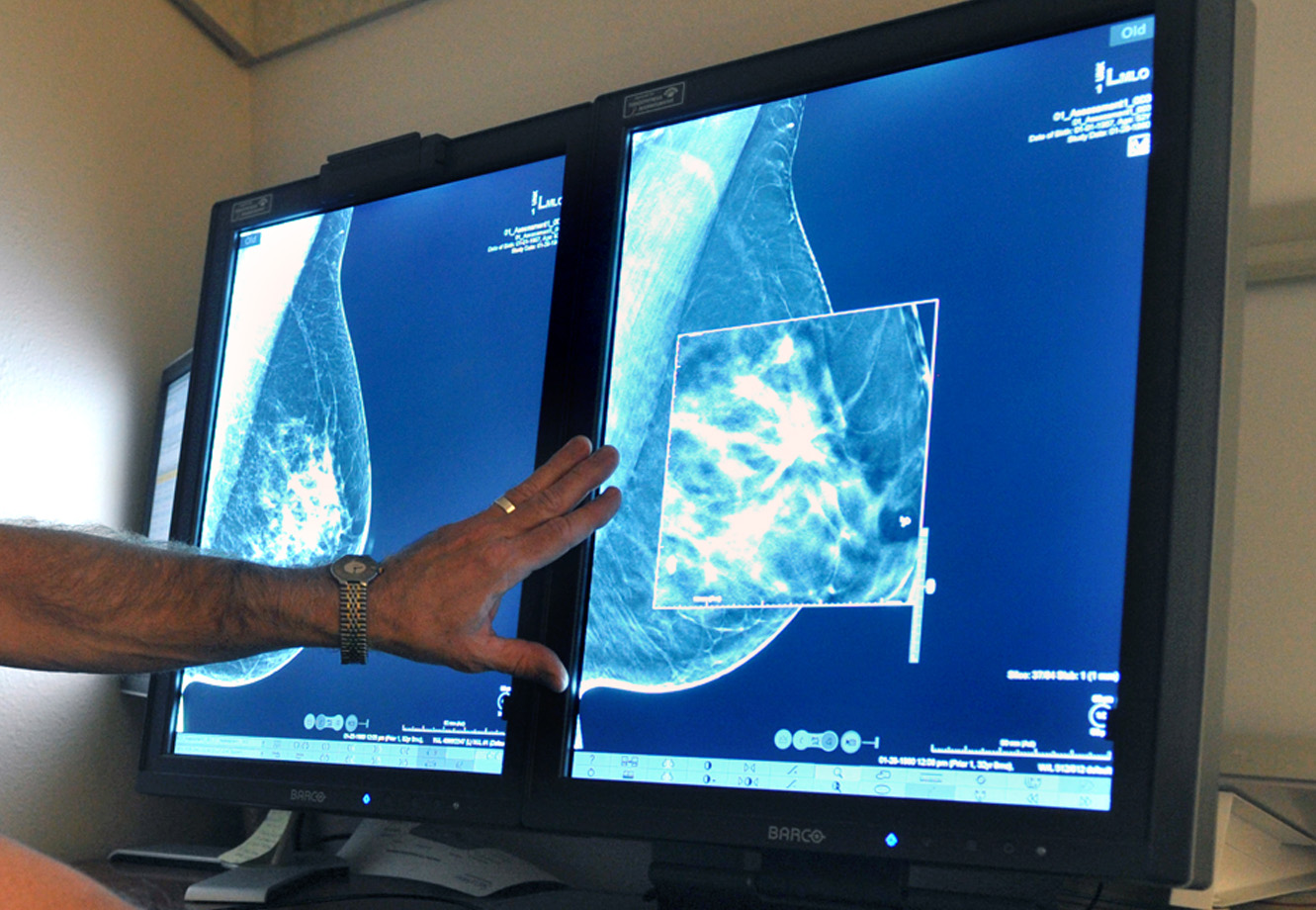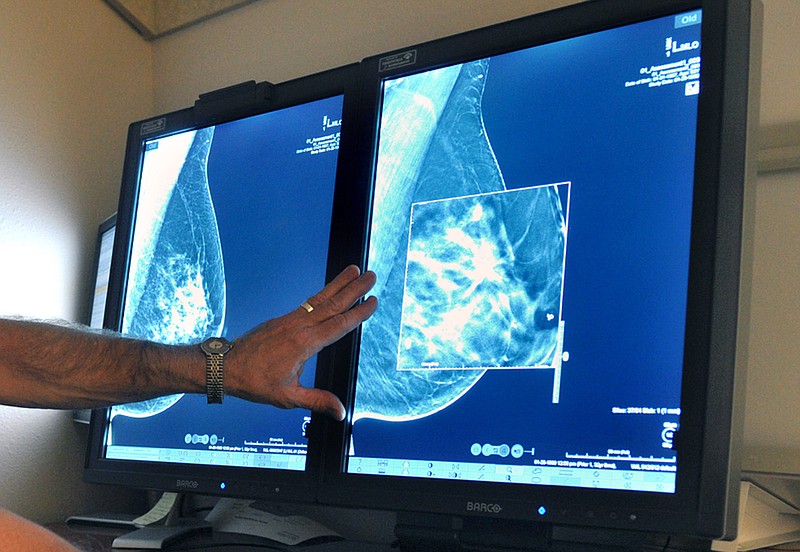Every woman should get a mammogram to detect possible breast cancers at age 40. Or at age 45. Or 50.
Self-exams are essential to detect possible cancers.
Or, self-exams are a waste of time, make women anxious and lead to unnecessary tests.
The confusion many women feel over what to do about detecting breast cancer got worse this month when the American Cancer Society issued new recommendations on mammograms and self-examinations. The new guidelines were immediately criticized by some doctors as likely to lead to unnecessary cancer deaths.
"All these changes completely confuse women," said Janet Kramer-Mai, manager of Erlanger hospital's Center for Breast Health. "I'm confused, and it's what I do!"
If women are confused, they often will postpone seeing their doctors, Kramer-Mai said.
The American Cancer Society's new rules recommend that every woman who does not have some predisposition to breast cancer wait until age 45 before getting a mammogram and, starting at age 55, get mammograms every other year. The ACS also dropped its recommendation that primary care doctors conduct routine physical breast exams, and said self-examinations, in which women check their breasts to look for lumps that may be cancerous, are of little value and often lead to unnecessary tests.
Dr. Maurice Rawlings, a cancer specialist with CHI Memorial's MaryEllen Locher Breast Center, predicts that 10 to 12 women locally will die of breast cancer if doctors follow the cancer society's new guidelines. That's the number of women whose breast cancers would have been detected early had they gotten mammograms at age 40 instead of 45, Rawlings said.
He conceded that it's a small number, but it matters if "you're one of those handful."
Rawlings said Memorial's cancer center doctors will continue to recommend that women get mammograms at age 40. And he will still recommend physical breast exams by both doctors and patients.
"Each week we will see someone who comes in with a negative mammogram, but 10 percent of cancers, mammograms don't show," he said. "Then a patient finds some little thing that is small" that turns out to be cancerous.
 FILE - In this Tuesday, July 31, 2012, file photo, a radiologist compares an image from earlier, 2-D technology mammogram to the new 3-D Digital Breast Tomosynthesis mammography in Wichita Falls, Texas. The technology can detect much smaller cancers earlier. In guidelines published Tuesday, Oct. 20, 2015, the American Cancer Society revised its advice on who should get mammograms and when, recommending annual screenings for women at age 45 instead of 40 and switching to every other year at age 55. The advice is for women at average risk for breast cancer. Doctors generally recommend more intensive screening for higher-risk women. (Torin Halsey/Times Record News via AP)
FILE - In this Tuesday, July 31, 2012, file photo, a radiologist compares an image from earlier, 2-D technology mammogram to the new 3-D Digital Breast Tomosynthesis mammography in Wichita Falls, Texas. The technology can detect much smaller cancers earlier. In guidelines published Tuesday, Oct. 20, 2015, the American Cancer Society revised its advice on who should get mammograms and when, recommending annual screenings for women at age 45 instead of 40 and switching to every other year at age 55. The advice is for women at average risk for breast cancer. Doctors generally recommend more intensive screening for higher-risk women. (Torin Halsey/Times Record News via AP)Erlanger's Kramer-Mai agreed.
"The older we get, the higher our risk for all cancers, including breast cancer," she said. A women's risk for developing breast cancer in her 40s is one in 69, one in 42 in their 50s, one in 29 in their 60s and, if they live to be 80, one in eight.
"So while our risk for developing breast cancer increases over the years," she said, "the American Cancer Society is now recommending that women do less to detect a cancer early. That is the disconnect for many of us who work closely with these patients."
In announcing the new guidelines, the cancer society made it clear that if a woman wants to get a mammogram at age 40, she should do so.
At age 40, "the physician should initiate a conversation with a female patient to discuss the benefits and harms and the limitations of mammography screening," said Dr. Elizabeth T.H. Fontham, of Louisiana State University, a member of the guideline development group. "Women should be told that the frequency and commonality of breast cancer become greater as a woman ages."
Memorial's Rawlings blamed poorly trained radiologists for some of the anxiety women experience with "false positives" from early mammograms - one of the reasons cited by the American Cancer Society for delaying them. Too often, he said, radiologists interpreting the test results will err on the side of being careful and conclude that an abnormality may be cancerous, suggesting additional tests.
He recommends women seek out medical centers that specialize in breast cancer, where staffers reviewing the mammograms will have more experience interpreting what they show.
He said he is concerned that the ACS guidelines may lead insurance companies to stop paying for early mammograms, even though he believes their preventive value outweighs their cost. A mammogram costs $70, he said, and one out of 10 mammograms detects breast cancer early and avoids $150,000 to $200,000 for chemotherapy treatment.
More than 200,000 women in the United States are diagnosed with breast cancer each year, according to the American Cancer Society. About 40,000 women die from breast cancer each year.
The society's new rules were published Oct. 20 in the Journal of the American Medical Association.
Contact Steve Johnson at sjohnson@timesfreepress.com, 423-757-6673, on Twitter @stevejohn sonTFP and on Facebook, at SteveJohnsonTFP.
